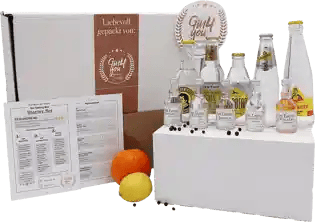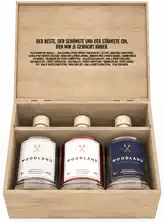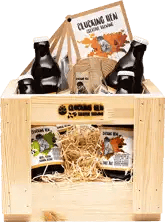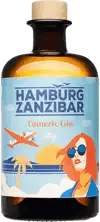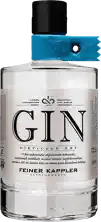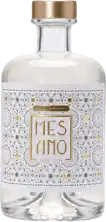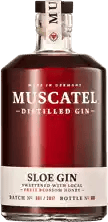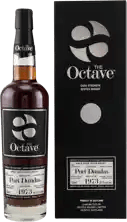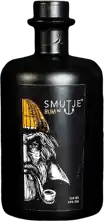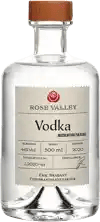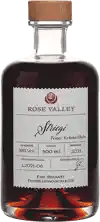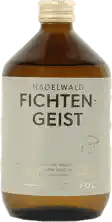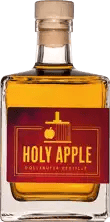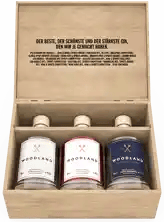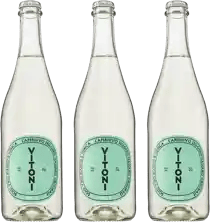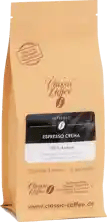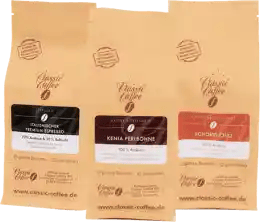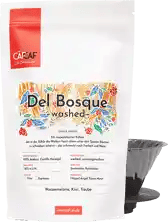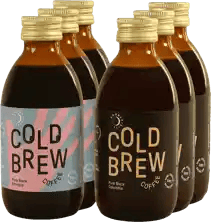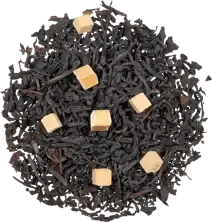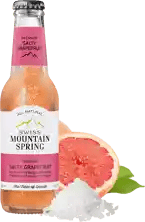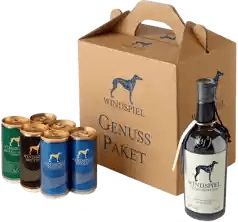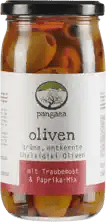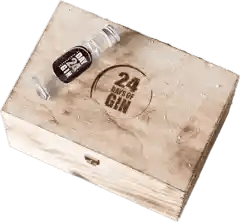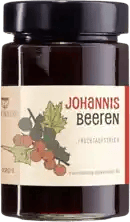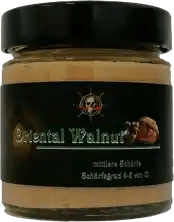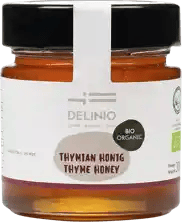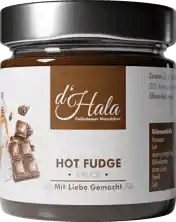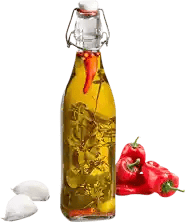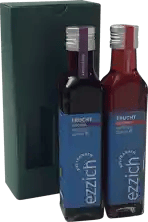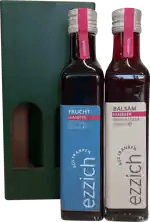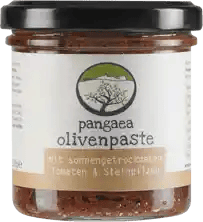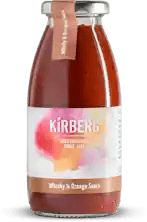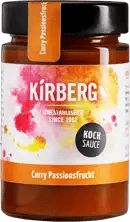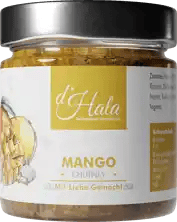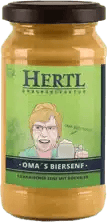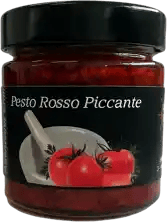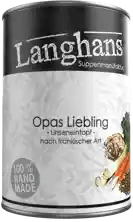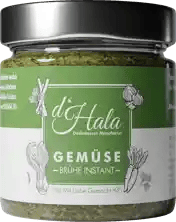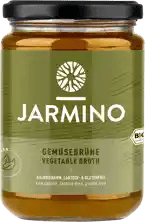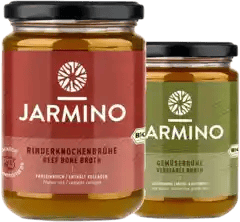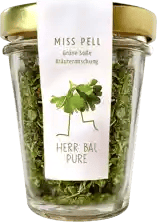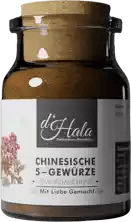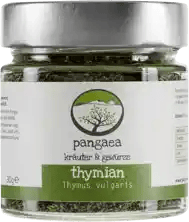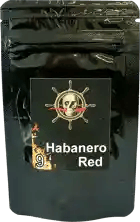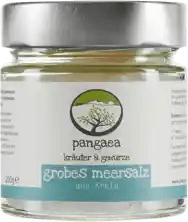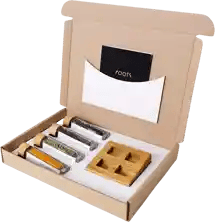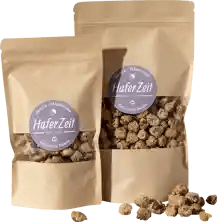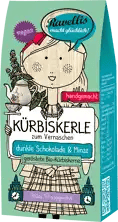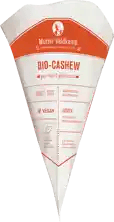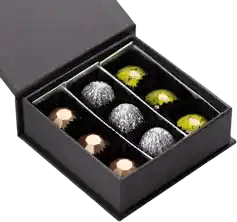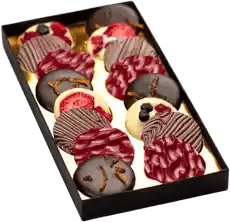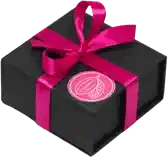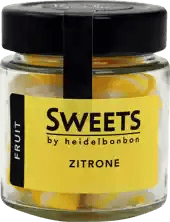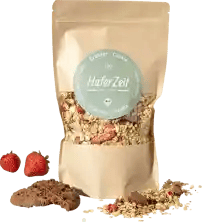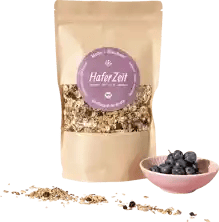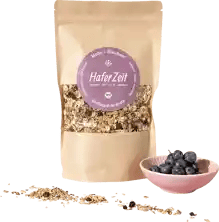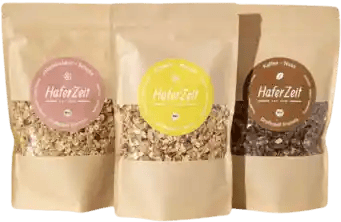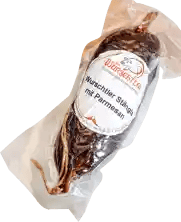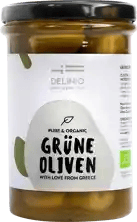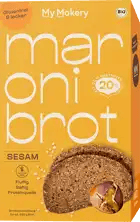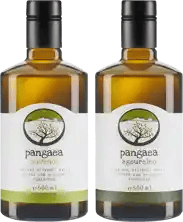Quality instead of quantity!
7,000 independent products
No mainstream
7,000 independent products
Buy jam and fruit spread
Welcome to the world of exquisite spreads! Are you looking for the perfect breakfast treat? Then you've come to the right place. Discover our range of jams and fruit spreads that are anything but ordinary. From classic citrus marmalades to innovative fruit spreads - you'll only find the best for your breakfast with us.
Our jams and fruit spreads are made with care and attention to detail. All our manufacturers place great value on natural ingredients and traditional production methods. Whether sweet, sour or exotic - you are guaranteed to find your new favorite spread with us.
Are you ready to expand your taste buds? Dive into our diverse range and find your perfect companion for bread, croissants or as a creative topping for desserts. Buying jam has never been so exciting and delicious!
Spread: A food category of its own
Spreads are more than just a topping for your bread. They are a category of their own in the world of food that impresses with its variety and creativity. You realize this not least when you walk through the supermarket and see the different sections full of spreads for bread and breakfast. From traditional jams to innovative fruit spreads, you'll find endless flavors, textures and combinations in this category.
What makes a good spread? It starts with the selection of the fruit, which must be ripe and aromatic. We make sure that our ingredients are of the highest quality. Natural sweetness, freshness and careful processing play a decisive role.
Discover the variety of spreads in our range. Whether as a classic jam, creamy fruit spread or even exotic combinations - we offer you a taste experience that will enrich your breakfast table and give every day a special start.
Marmalade, fruit spread, jam, jelly: what's the difference?
When it comes to breakfast, there are few things more confusing than the differences between jam, fruit spread, marmalade and jelly. But don't worry, we'll shed some light on the subject! Jam, often used as a generic term for sweet spreads, is actually just citrus fruit. Jam, known for its high fruit content, is made from a variety of fruits and must contain a minimum amount of fruit per kilogram.
Jelly, on the other hand, is a smooth, jelly-like substance made from fruit juice. It contains no pieces of fruit, only the juice. Fruit spread, on the other hand, is a less sugary alternative that is characterized by a high proportion of fruit and often contains less sugar or even no sweetener at all.
Did you know that the addition "extra" to jams means that they must contain even more fruit per kilogram? Now you're a real expert when it comes to the differences between these delicious spreads!
What is jam?
Marmalade, the classic spread, is traditionally made from citrus fruits. This includes oranges, lemons, grapefruits and the like. The word "marmalade" itself comes from the Portuguese word for quince, a reference to its origins. Here you will find several jams that respect this tradition and are made with a high proportion of citrus fruits.
Whether on fresh bread, as a filling for pastries or as a topping for desserts, our jams add a pleasantly fresh and fruity note to any dish. All suppliers on our marketplace generally make sure that our marmalades are not only delicious, but also of high quality - without unnecessary additives and always with the best that citrus fruits have to offer.
Discover the world of citrus marmalades with us and experience how they can add a very special touch to your breakfast table. From classic orange marmalade to more unusual varieties such as grapefruit or lemon marmalade.
What is fruit spread?
Fruit spread is the perfect choice for anyone who loves fruit but wants less sugar in their spread. Unlike jams and marmalades, which have a high sugar content, fruit spread is often characterized by a lower sugar content. This means you can enjoy the natural and intense taste of the fruit without it being masked by too much sweetness.
Our fruit spreads are made from carefully selected, ripe fruit and processed gently to preserve the natural taste and nutrients. Whether on bread, as an ingredient in your yogurt or as a filling for pastries.
What is vegetable spread?
Vegetable spreads are a tasty and often healthier alternative to traditional sweet spreads. These spreads are mainly made from different types of vegetables and can be both savory and sweet, depending on the ingredients and spices. Popular vegetables for spreads include tomatoes, peppers, eggplants, zucchinis and pumpkin.
The variety of vegetable spreads reflects the wide range of vegetable varieties and preparation methods. Some vegetable spreads are finely pureed for a smooth consistency, while others remain chunky to provide a heartier texture. They can be enriched with herbs, spices, oils and sometimes nuts or seeds to provide additional flavor and nutritional value.
Vegetable spreads are an excellent choice for vegetarians, vegans or for those who simply want to increase their vegetable intake. They are versatile and can be used as a spread, dip or even as a base for sauces and dressings. Vegetable spreads are an easy and tasty way to incorporate more vegetables into your daily diet.
What is jam?
Jam is the epitome of a fruity spread. It is made from a mixture of sugar and fruit and must contain a certain minimum amount of fruit. Jam is known for its smooth, spreadable consistency and intense fruit flavor.
Jam is often used as the "official" term for marmalade. In normal usage, jam and marmalade are therefore often one and the same thing.
From classic strawberry jam to creative creations such as apricot lavender - our jams are a real highlight for anyone who values quality and taste.
What does the addition "Extra" mean for jams?
If you come across jams labeled "Extra" when shopping, this means that they have an even higher fruit content than normal jams. Extra jam is for those who like it particularly fruity and appreciate the real, unadulterated taste of the fruit. As a result, they are rich in natural flavors and less sweet, making them an excellent choice for connoisseurs.
What is jelly?
Jelly is a unique spread made from fruit juice or fruit juice concentrate. It differs from jams and marmalades in that it does not contain pieces of fruit, but has a smooth, jelly-like consistency.
They are perfect for anyone who wants to enjoy the taste of fruit in a lighter, less intense form.
What is jam?
Often an underrated star among spreads, purée is a thickened fruit purée that is particularly appealing due to its natural sweetness and velvety consistency. Puree is made by boiling down whole fruit, with the natural fructose providing a subtle sweetness.
Puree is versatile - try it as a spread, mix it into your muesli or use it as an ingredient in your baked goods.
Are jam and marmalade the same thing?
Although marmalade and jam are often used interchangeably, there is actually a significant difference between them. Marmalade is made exclusively from citrus fruits, whereas jam can be made from a variety of fruits. Nowadays, or in everyday language, both terms are used for the same thing.
Spread varieties: The variety of spreads
The world of spreads is incredibly diverse and offers something for every taste. From classic jams and marmalades to innovative creations such as chutneys or even spicy spreads, the choice is almost endless.
In our range, you will find a wide range of spreads that are made with care and passion. We not only offer you traditional varieties such as strawberry jam or apricot jam, but also exotic and unusual varieties that will take your taste buds on a journey of discovery.
This also includes sweet spreads such as chocolate spreads, nut spreads and caramel spreads. These often have a mixture of chocolate and nut. But newer variants such as salted butter cream are also joining the variety of spreads.
Germany - the land of breakfast spreads
In Germany, the culture of breakfast and spreads has a long tradition. Here, particular emphasis is placed on variety and quality. From savory sausage and cheese spreads to sweet jams and honey, the choice of spreads in Germany is great.
If you observe the development and change of product ranges in supermarkets, you can't help but notice that there are always new varieties. The rise of vegan products in particular has brought a breath of fresh air. More and more spreads for bread - be it sausage spread or cream spread - are now also available as vegan alternatives. Germany is certainly undergoing a change in terms of its breakfast and spread range.
What types of fruit spread are available?
The world of fruit spreads is as colorful and diverse as nature itself. From classic varieties such as strawberry and raspberry to exotic creations such as mango-passion fruit or apricot-lavender, the choice is almost limitless. So it would hardly make sense to list them all here, because "limitless" is meant almost literally. This is all the more true when you consider that fruits are increasingly being combined with each other to create their own new fruit spread.
Which jam or fruit spread is the most popular?
Opinions differ when it comes to the question of the most popular jam or fruit spread. While some prefer the classic strawberry jam, others swear by more unusual varieties such as blueberry-lavender or peach-rosemary. However, strawberry jam remains the most popular jam among Germans.
What is the most popular spread?
The most popular spread varies according to personal taste and preference. While some prefer the sweet temptation of jams and preserves, others opt for savory varieties such as sausage or cheese spreads. In Germany, the classic strawberry jam in particular is a perennial favorite on the breakfast table.
Does butter count as a spread? If so, then butter is probably one of the most popular spreads. The many "spreadable" and salted butter products in particular speak for this and are mainly used as a spread.
Apart from butter, cream cheese is very popular in Germany. The creamy spreads are not only used for bread, but often also in dishes or for baking. Philadelphia, for example, is used for the now famous Philadelphia cake.
What types of jam are there?
Marmalade is a versatile and popular spread that is available in many different varieties. The classic marmalades are made from citrus fruits, including oranges, grapefruits, lemons and limes. These traditional varieties are characterized by their distinctive combination of sweetness and tartness.
Away from the classic citrus marmalades, there are also more creative varieties that are made from a mixture of different fruits. These can include exotic fruits, berries or a combination of citrus fruits and other types of fruit. Popular examples are strawberry-orange marmalade or raspberry-lemon marmalade.
Some jams are also enriched with additional flavors such as vanilla, ginger or spices to provide an even more intense taste experience. These specialty jams can provide a delicious change of pace on the breakfast table or be used as a sophisticated ingredient in the kitchen.
Are jams vegan?
Many people wonder whether jams are vegan. Generally speaking, jams consist mainly of fruit and sugar, which makes them a good option for vegans. Animal products are not included in traditional jam recipes. Instead, pectin, a plant-based gelling agent, is often used.
However, when buying jam, it is important to check the ingredients list as some manufacturers may use animal gelling agents such as gelatine. Vegan jams are labeled and guarantee the absence of animal products.
For vegans and anyone looking for plant-based alternatives, vegan jams offer a delicious way to sweeten the day without compromising on taste or ethical values.
What is the shelf life of jam?
The shelf life of jam is a key aspect of its quality. Jams generally have a long shelf life thanks to their high sugar content and the natural acidity of the fruit. If they are stored correctly and unopened, they can often keep for several years.
Once opened, jam should be kept in the fridge to preserve its freshness. Typically, an opened jam will keep for several weeks to a few months. However, it is important to look for signs of mold or spoilage and not to use the jam if these signs are visible.
The shelf life can also depend on the type of jam and the sugar and fruit content. Jams with a higher sugar content generally keep longer than those with a lower sugar content.
Can you still eat moldy jam?
If jam shows signs of mold, it is important not to eat it. Mold can spread both on the surface and below the visible area, producing potentially harmful toxins. Removing the mold area is not enough, as the invisible mycelia of the mold can penetrate deep into the jam.
To prevent mold growth, it is important to store jam in a cool, dry place and always use clean utensils to avoid cross-contamination. If there are signs of mold, the jam should be discarded to avoid health risks.
Does jelly keep as long as jam?
The shelf life of jelly is similar to that of jam and depends heavily on the ingredients and storage conditions. Like jam, jelly also contains sugar and often acid, which act as natural preservatives. Unopened and stored under the right conditions, jelly can also keep for several years.
Once opened, jelly, like jam, should be kept in the fridge and consumed within a few weeks to months. As with any preservation, it is important to watch for changes in smell, color and texture to ensure freshness and quality.
How do you store jam?
Storing jam correctly is crucial for its shelf life and quality. Unopened jams should be stored in a cool, dry place, away from direct sunlight and heat sources. This helps to preserve the natural taste and consistency.
Once opened, it is important to store jam in the refrigerator. The cool temperature range slows down the development of bacteria and mold. It is also advisable to remove jam with a clean spoon to avoid cross-contamination.
The shelf life of an opened jam in the fridge is usually a few weeks to a few months, depending on the sugar content and the fruit ingredients.
Why is there so much sugar in jam?
Sugar plays an important role in jams, both in terms of taste and preservation. Sugar acts as a natural preservative by inhibiting the growth of bacteria and mold. This increases the shelf life of the jam and makes it last longer.
Sugar also helps to improve the texture and consistency of the jam. It interacts with the pectin contained in the fruit, causing the jam to gel and give it its typical spreadable consistency.
Although sugar is an essential ingredient in jams, there are also variants with reduced sugar content or alternative sweeteners that can offer a healthier alternative.
Why is jam often so expensive?
The cost of jam can be higher for a number of reasons. One of the main factors is the quality and origin of the fruit used. High-quality, organically grown or rare fruit varieties often increase production costs. The production method also plays a role; artisanal methods, in which jams are produced in small quantities and with special care, are often more cost-intensive than industrial mass production.
Another factor can be additional ingredients such as special sweeteners, natural preservatives or exclusive flavorings, which increase the price. Packaging and marketing can also contribute to the overall cost.
Despite higher prices, high-quality jams often offer a more intense taste experience and are free from unnecessary additives, making them a valuable choice for many consumers.
Make your own jam/preserve
Making your own jam or marmalade is a popular and rewarding activity. The process allows you to fully control the quality and type of ingredients and create individual flavors. Basic ingredients are typically fresh fruit, sugar and often pectin, a natural gelling agent.
Start by selecting high-quality, ripe fruit. The fruit is washed, chopped and mixed with sugar in a large pot. The amount of sugar can vary depending on the sweetness of the fruit and personal taste.
The mixture is brought to the boil, stirring constantly. Pectin, a natural gelling agent, can be added to aid gelling, especially for fruit with a low pectin content. The boiling jam is then poured into sterilized jars, which are sealed airtight and inverted to reinforce the vacuum.
Making your own jam not only allows for creative leeway with ingredients, but is also an excellent way to preserve and enjoy seasonal fruit.
When making your own, the fruit and sugar proportions can be adjusted to taste. It also offers the opportunity to experiment with different fruit combinations and additives such as herbs, spices or even spirits.
Homemade jam or marmalade should be stored correctly to maximize its shelf life. Canning in sterilized jars is a common method for preserving jams and marmalades over a longer period of time.
Storing home-made jam/preserves correctly
Storing homemade jams and marmalades correctly is crucial for their shelf life and freshness. After preserving, the jars should be sealed immediately and ideally stored in a cool, dark place. A cool cellar or a dark larder are suitable places.
To maximize shelf life, the jars should be sterilized before they are filled with jam or marmalade. This prevents contamination with bacteria or mold spores. Once opened, homemade jams and marmalades should be stored in the fridge and used within a few weeks.
If stored correctly, homemade jams and marmalades can keep for several months to a year. However, it is always advisable to check for signs of mold or spoilage and not to use the product if in doubt.
Brilliant!

Bitte bestätige deine Anmeldung noch eben - du hast eine Bestätigungsmail von uns. Klicke darin auf den Link. Danach bekommst du deinen Rabattgutschein.

